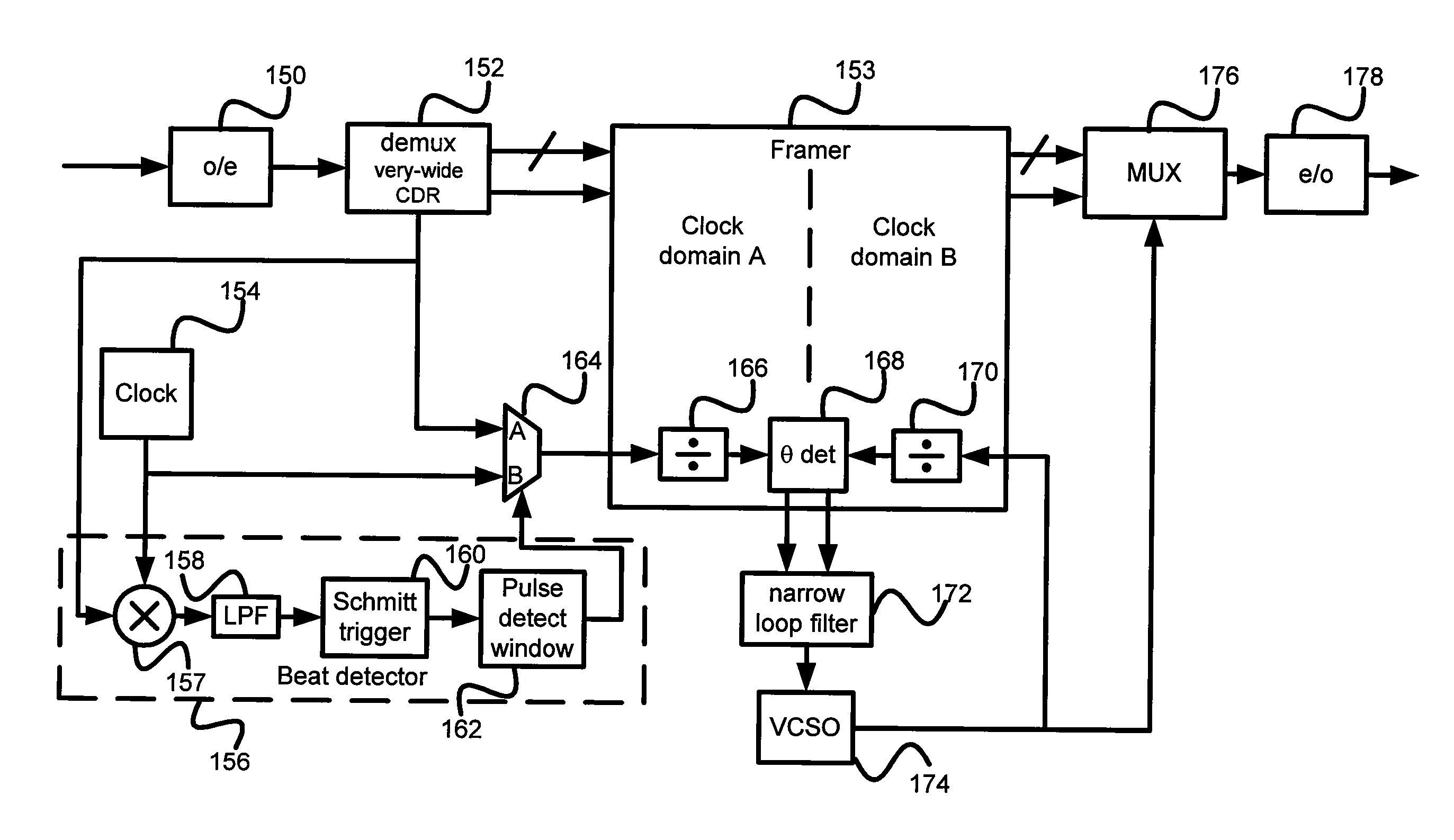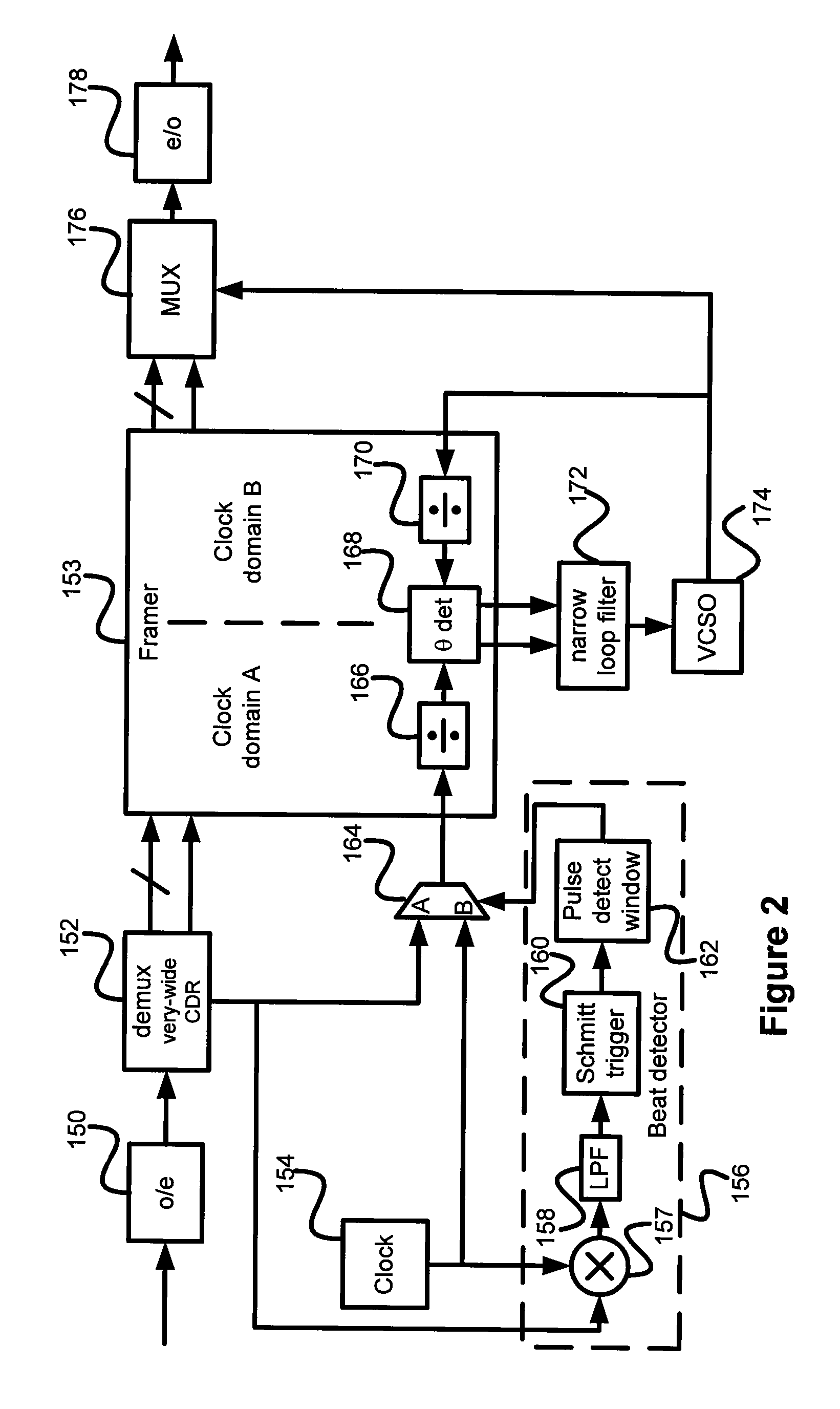Los beat detector
a detector and beat technology, applied in the field of timing elements in optical networking equipment, can solve problems such as loss of signal, failure conditions, and inability to aid in maintaining the hard edges of pulses
- Summary
- Abstract
- Description
- Claims
- Application Information
AI Technical Summary
Benefits of technology
Problems solved by technology
Method used
Image
Examples
Embodiment Construction
[0022]Generally, the present invention provides a method and system for detecting loss of signal in optical repeaters and other similar environments using frequency deltas.
[0023]In the following description, for purposes of explanation, numerous details are set forth in order to provide a thorough understanding of the present invention. However, it will be apparent to one skilled in the art that these specific details are not required in order to practice the present invention. In other instances, well-known electrical structures and circuits are shown in block diagram form in order not to obscure the present invention. For example, specific details are not provided as to whether the embodiments of the invention described herein are implemented as a hardware circuit, firmware, or a combination thereof.
[0024]FIG. 1 presents a block diagram of an optical regenerator. An optical signal is received by optical to electrical converter 100, where it is transferred to the electrical domain....
PUM
 Login to View More
Login to View More Abstract
Description
Claims
Application Information
 Login to View More
Login to View More - R&D
- Intellectual Property
- Life Sciences
- Materials
- Tech Scout
- Unparalleled Data Quality
- Higher Quality Content
- 60% Fewer Hallucinations
Browse by: Latest US Patents, China's latest patents, Technical Efficacy Thesaurus, Application Domain, Technology Topic, Popular Technical Reports.
© 2025 PatSnap. All rights reserved.Legal|Privacy policy|Modern Slavery Act Transparency Statement|Sitemap|About US| Contact US: help@patsnap.com



